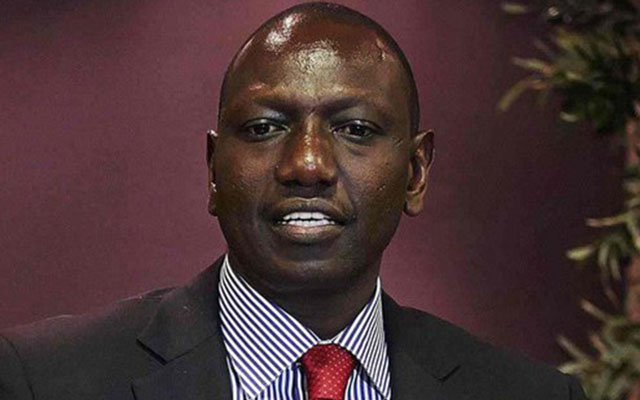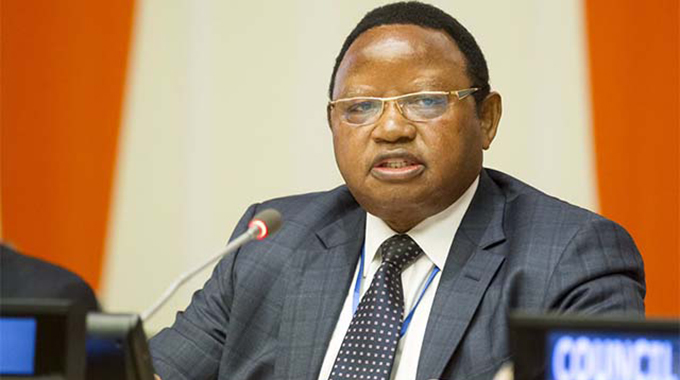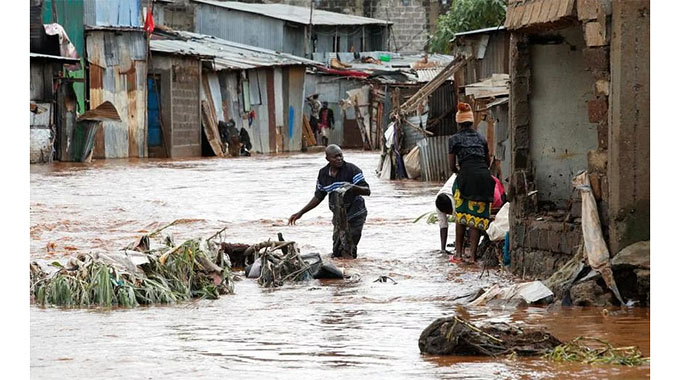Little still separates Kenyan presidential aspirants

NAIROBI. — Kenya’s Deputy President William Ruto had by yesterday evening edged ahead in a tight presidential race, according to official results reported by Kenyan media yesterday, as more riot police were deployed inside the national election tallying centre after scuffles and accusations by party agents.
The fracas underscored fraying tempers and high tensions within the national counting hall as the country waits for official results from last Tuesday’s election.
There were wry digs online over the melee from citizens pointing out that the rest of the nation was waiting patiently.
In the presidential race, official verified results reported by the Nation media group showed Ruto taking 51 percent of the vote, ahead of left-leaning opposition leader Raila Odinga who had 48 percent.
Confusion over vote tallying in the media and the slow pace of progress by the electoral commission have fed anxiety in Kenya, which is East Africa’s richest and most stable nation but which has a history of violence following disputed elections.
Reuters was unable to get access to the official running vote tally for the presidential race yesterday. A live feed displaying the results at the national tallying centre had disappeared hours earlier.
When asked about the tally, a spokeswoman for the commission referred Reuters to the live feed. Other electoral officials said they were unable to provide the information.
Officially verified results on Saturday, with a little more than a quarter of votes counted, put Odinga in the lead with 54 percent of the vote, while Ruto had 45 percent.
The winner must get 50 percent of votes plus one. The commission has seven days from the vote to declare the winners.
A Reuters tally of 255 out of 291 preliminary constituency-level results at 1200 GMT yesterday showed Ruto in the lead with 52 percent and Odinga at just over 47 percent.
Two minor candidates shared less than a percent between them.
Reuters did not include 19 forms in the count because they lacked signatures, totals, were illegible or had other problems.
The preliminary tally is based on forms that are subject to revision if any discrepancies are discovered during the official verification process.
The many checks and balances are designed to try to prevent the kind of allegations of rigging that provoked violence in 2007, when more than 1,200 people were killed, and in 2017, when more than 100 people were killed.
Odinga and Ruto are vying to succeed President Uhuru Kenyatta, who has served his two-term limit. Kenyatta fell out with Ruto after the last election and has endorsed Odinga for president.
Kenyatta leaves power having laden Kenya with debt for expensive infrastructure projects and without having tackled the endemic corruption that has hollowed out all levels of government.
The next president will also take on rapidly rising food and fuel costs.
Ruto’s strong showing reflects widespread discontent with Kenyatta’s legacy — even in parts of the country where the president has previously swept the vote.
Large numbers of Kenyans also did not vote, saying neither candidate inspired them.
Yesterday, Ruto’s party member Johnson Sakaja won the governorship of the capital Nairobi, the wealthiest and most populous of the 47 counties.
As the tight race continued, party agents have grown increasingly agitated at the tallying centre, known as Bomas.
Late on Saturday, Odinga’s chief agent Saitabao ole Kanchory grabbed a microphone and announced “Bomas of Kenya is a scene of crime,” before officials switched off his microphone.
Party agents scuffled with each other, with police and with election officials, at one point trying to drag one official outside.
The scenes, broadcast on national news, were met with bemusement by Kenyans, who urged their leaders to grow up.
“The reckless behaviour at Bomas by so-called leaders, which can fast ignite the country, must be called out,” tweeted Alamin Kimathi, a human rights activist. “Let the drama end. Let the process continue.”
The Independent Electoral and Boundaries Commission (IEBC) chairman Wafula Chebukati on Saturday announced new measures to reduce on the number of people interfering with the tallying, but was confident they will have a result by end of yesterday or early today.
The IEBC is now hosting all but one returning officer from across the country who have to verify forms 34A and B at the Bomas of Kenya, before results are released.
The election body on Friday announced that one of their returning officers in the capital city was missing. The matter has been handed to police, but election counting will continue.
Meanwhile, at least seven of Kenya’s 47 incoming governors are women, compared with only three in the last government, according to results from the IEBC.
While tallying is ongoing in most constituencies across the country, women have also won six of the 290 seats in the incoming National Assembly so far.
Despite nearly half of registered voters in the country being women, very few female leaders actually hold elective positions in Kenya.
A constitutional provision introduced a “two-thirds rule” in 2010 to enable more women to get into leadership positions and tone down male dominance in politics.
Kenyans voted for 16,105 candidates, who are vying for a total of 1,879 elective positions. — Reuters/Al Jazeera









Comments